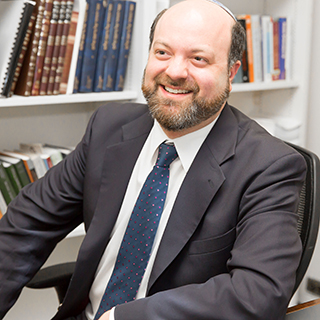Written on the Heart

The mitzvot are a path of spiritual practice, a cultivation of religious awareness that may open us to the mystery and urgency of the divine voice. Not only legal obligation, mitzvah is a moment of encounter with the ever-renewing Divine Presence as it reverberates through the generations of the Jewish people.
As the hasidic mystics have taught, every person is a living Torah, an embodiment of the word and light of God. According to ancient rabbinic midrash, it was through the Torah that God created the world, and later mystics adapted this idea to suggest that the Torah is the very energy and life-force of Divinity as it fills the world and the human self. Each person is imbued with the divine spirit of Torah; the words that we speak and the actions we undertake are all manifestations of Torah, mitzvot in motion.
We stand this week just a short distance from the grand revelation of Sinai. We have heard the legislations of parashat Mishpatim, the detailed mapping of individual and communal life. In parashat Tetzavveh, as could be said in different ways about parashat Terumah, the Torah is taken into the heart of each individual Jew; the mitzvot received as a people through divine revelation are now absorbed into the depths of the human self in all its singularity and preciousness.
At a literal level, our parashah begins with the imperative to construct the forms of priestly service with precision, to fashion the devotional trappings of the Ohel Moed (Tent of Meeting):
וְאַתָּ֞ה תְּצַוֶּ֣ה ׀ אֶת־בְּנֵ֣י יִשְׂרָאֵ֗ל וְיִקְח֨וּ אֵלֶ֜יךָ שֶׁ֣מֶן זַ֥יִת זָ֛ךְ כָּתִ֖ית לַמָּא֑וֹר לְהַעֲלֹ֥ת נֵ֖ר תָּמִֽיד׃
You shall instruct the Israelites to bring you clear oil of beaten olives for lighting, for kindling lamps regularly. (Exod. 27:20)
But read figuratively through the lens of spiritual direction, this opening verse seeks to cultivate the growth of the individual person into a living embodiment of mitzvah, a vessel for the divine light.
Such is the teaching found in a playful and bold reading by the Sefat Emet, the late nineteenth century hasidic master, Rabbi Yehudah Leib Alter of Ger: the statement “atah tetzavvehet benei Yisrael” (“You shall ‘instruct’ the Israelites”) may be read as the transformation of the people, each of them, into a living mitzvah. Make them, the people of Israel, into mitzvot in the world—tetzaveh et benei Yisrael. Guide each Jew toward the embodiment and ensoulment of the mitzvot; help them become mitzvot themselves.
What does this mean? How does a person become a living mitzvah? Perhaps it is in those moments of greater spiritual awareness, the affirmation of the pervasive presence of the sacred in the world. Or perhaps it is in a posture of love and compassion toward the others that we encounter on a daily basis. When we “become mitzvot” in this way, we contribute meaningfully to the building of the sacred “lighting” (ma’or) mentioned in this opening verse, the luminous presence of God in our world. That is the dramatic act of לְהַעֲלֹ֥ת נֵ֖ר תָּמִֽיד—raising up the eternal flame of divine wonder and mystery. We bring light into the world when we become instruments of the ahavah rabbah of Divinity—the great and unending love that God sends into our hearts through the mitzvah of Ḥesed, kindness and compassion toward our fellow human beings. Not just to our family, friends, and intimate partners, but to all who cry out to us—whether that cry be audible or silent.
This, I suggest, is how we might read another striking verse from our parashah—lines that depict the ornate and dramatic features of the priestly service bestowed upon Aaron:
וְנָשָׂ֣א אַ֠הֲרֹן אֶת־שְׁמ֨וֹת בְּנֵֽי־יִשְׂרָאֵ֜ל בְּחֹ֧שֶׁן הַמִּשְׁפָּ֛ט עַל־לִבּ֖וֹ בְּבֹא֣וֹ אֶל־הַקֹּ֑דֶשׁ לְזִכָּרֹ֥ן לִפְנֵֽי־ה’תָּמִֽיד׃
Aaron shall carry the names of the children of Israel on the breastplate of mishpat over his heart, when he enters the sanctuary (bevo’o el hakodesh), for remembrance (lezikaron) before the LORD always. (Exod. 28:12)
In its original biblical context, this ritual practice is both evocative and mysterious. Aaron the priest is called upon to bring the people “with him” symbolically into the sacred zone; his task is to carry them upon his heart so that when he approaches God he fully represents the people. Applying a figurative spiritual reading to this already rich devotional ritual, let us interpret Aaron here as a model for our own individual journey to the sacred, our cultivation of a spiritual practice infused with the moral urgency of ḥesed and mishpat—kindness or compassion, and justice. We must hold that marker of justice and goodness on our hearts always: the ḥoshen mishpat (“the breastplate of judgment,” perhaps the breastplate of justice) should be kept close, and “the names of the children of Israel”—or, far better, of all people who suffer and need our love and compassion—should be symbolically inscribed upon our hearts. We must carry that vision of justice and love whenever we seek to approach the sacred (be-vo’o el hakodesh). Remember them to God (lezikaron lifnei YHVH tamid): always hold the pain of others in your mind as you approach the holy, for human goodness and love must never be removed from spiritual practice. That remembering, that zikaron, brings us before God (lifnei YHVH)—to become aware of the brokenness and to seek its redemption.
The publication and distribution of the JTS Commentary are made possible by a generous grant from Rita Dee (z”l) and Harold Hassenfeld (z”l).



